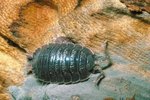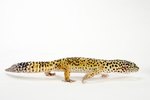Although a few exceptions exist, most frogs and salamanders live in dark, cool microhabitats. Many reptiles, invertebrates and rodents also inhabit dark, cool places in the wild, although more exceptions exist among these groups. In captivity, these pets will thrive without much -- if any --supplementary lighting or heat.
Frogs and Salamanders
Owing to their permeable skin, most terrestrial amphibians must avoid habitats in which they may dehydrate, so they typically inhabit cool, dark places. Some of the most common pet species include red-eyed tree frogs (Agalychnis callidryas), green tree frogs (Hyla cinerea), American toads (Anaxyrus americanus) and tiger salamanders (Ambystoma tigrinum).
Most amphibians require a relatively high cage humidity, which you can provide by utilizing a moisture-retaining substrate or incorporating a large water reservoir in the cage. All but a few aquatic species require live food items, such as crickets or roaches.
Reptiles
Many small forest-dwelling snakes from temperate regions will thrive in room-temperature cages, but you must provide a small basking lamp or heating pad at one end of the cage so the snake can raise its body temperature when necessary. Most diurnal lizards require special lighting, and most nocturnal species require relatively warm temperatures. One exception is the crested gecko (Rhacodactylus ciliatus), which thrives with only ambient room light and remains active and healthy in cages as cool as 68 degrees Fahrenheit, although it is preferable to keep the cage about 2 to 4 degrees warmer than this. The vast majority of turtles require access to warm temperatures and special lighting.
Invertebrates
The majority of the most popular invertebrate pets will thrive with little supplemental lighting or heating. This is especially true of temperature creatures, such as domestic crickets (Acheta domesticus) and pill bugs (Armadillidiidae). Many tropical arachnids, such as zebra tarantulas (Aphonopelma seemani), thrive in unheated cages, while others, such as emperor scorpions (Pandinus imperator), require a small amount of supplemental heat.
Except for some arachnids, most invertebrate pets live relatively short lives. Some types of invertebrates can inflict a harmful sting or bite. These species are inappropriate for beginners or children.
Rodents
Hamsters, rats, mice and several other rodents are nocturnal creatures, who spend much of their time living in cool, dark burrows. Their intelligence and tendency to interact with their keeper make them rewarding pets, but they require more frequent maintenance than invertebrates, amphibians and reptiles do. However, most pet rodents thrive on commercially produced diets, which are easier to acquire, store and provide than the live prey many other small pets need.





